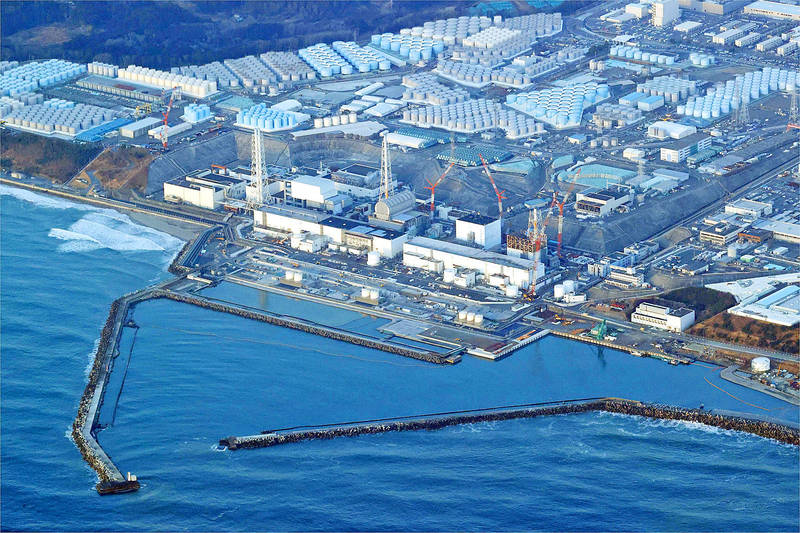《TAIPEI TIMES》 Fukushima wastewater discharge not a threat: AEC

The Fukushima Dai-ichi nuclear power plant in Okuma, Japan, is pictured on March 17 last year. Photo: AP
/ Staff writer, with CNA
Wastewater containing tritium discharged from Fukushima Dai-ichi nuclear power plant is expected to reach Taiwan’s territorial waters in about four years, but as the concentration levels would be below the detection limit, there would be no radiation safety concern, the Atomic Energy Council (AEC) said yesterday.
In April 2021, 10 years after the earthquake and tsunami that wrecked the power plant, the Japanese government announced that it would release radioactive wastewater from the facility, treated using an advanced liquid processing system, into the Pacific Ocean.
An International Atomic Energy Agency task force last year carried out three comprehensive reviews on Tokyo Electric Power Co’s discharge plan, and its preliminary findings, released on Wednesday, said that the company has the technical competence to complete the operation, and its measurements of the treated water were accurate and precise.
The Japanese government said that simulations showed no increase in radioactivity from the discharged water beyond 3km from the coast, the AEC said.
The radioactivity concentration is only about 1:10,000 to 1:100,000 of the background concentration level, and would be smaller as it is diluted by seawater, it said.
The wastewater would first flow toward the US with the Kuroshio Current and the North Equatorial Current, later returning to the Philippines, and moving north with the Kuroshio Current to Taiwan and Japan, an AEC official said.
It would reach Taiwan’s territorial waters at the end of the circulation, which would take about four years, and the tritium concentration level at that time would be below the instrument detection limit, he said.
As ocean currents are complex, a small portion of the wastewater might flow toward the south along with mesoscale eddies, reaching the seas near Taiwan in a year at the earliest, he added.
The AEC is to work with the Central Weather Bureau to establish a simulation model for the dispersion of radioactive substances in marine ecosystems, and provide a seven-day forecast of the dispersion and impact warning of tritium wastewater to the nearby sea area and fishing grounds after Tokyo Electric Power begins discharging the wastewater.
Regarding testing the levels of tritium in seafood, the AEC official said that the isotope emits weak radiation and can only travel about 5mm through the air, which can be blocked by a piece of paper, so it cannot be directly tested, requiring seafood samples to be delivered to special laboratories for treatment and analysis, which would take about 14 workdays.
新聞來源:TAIPEI TIMES



















